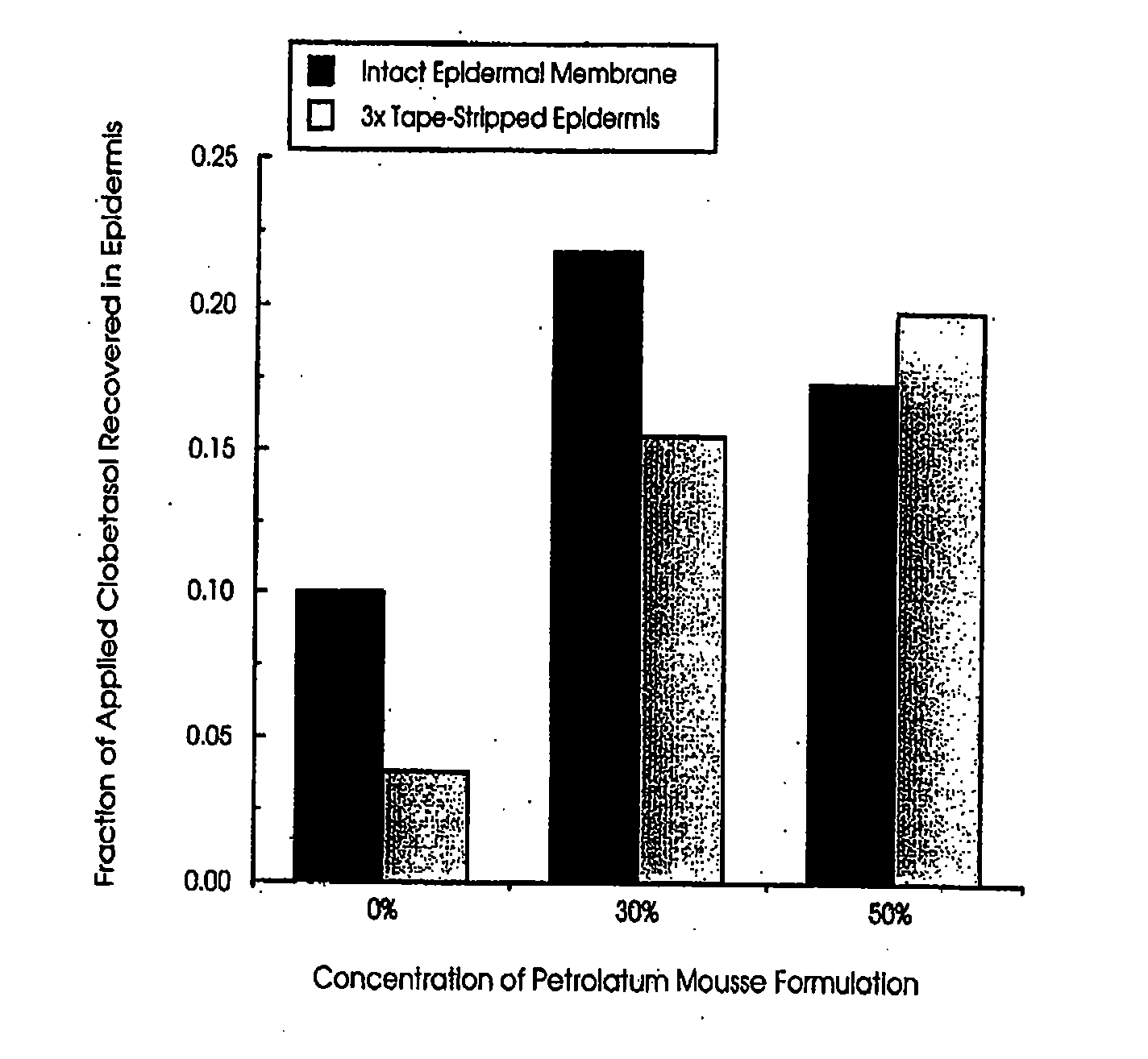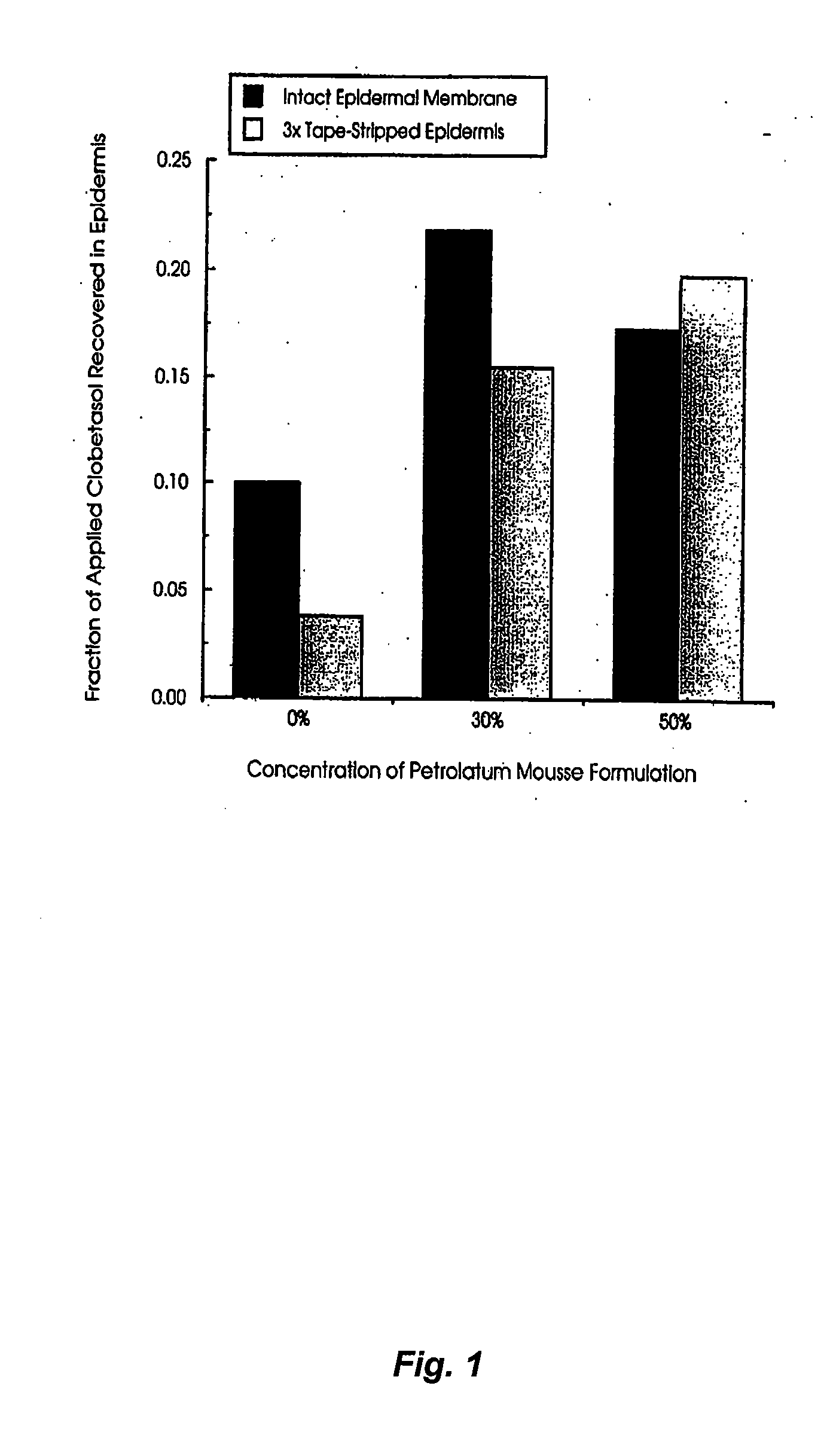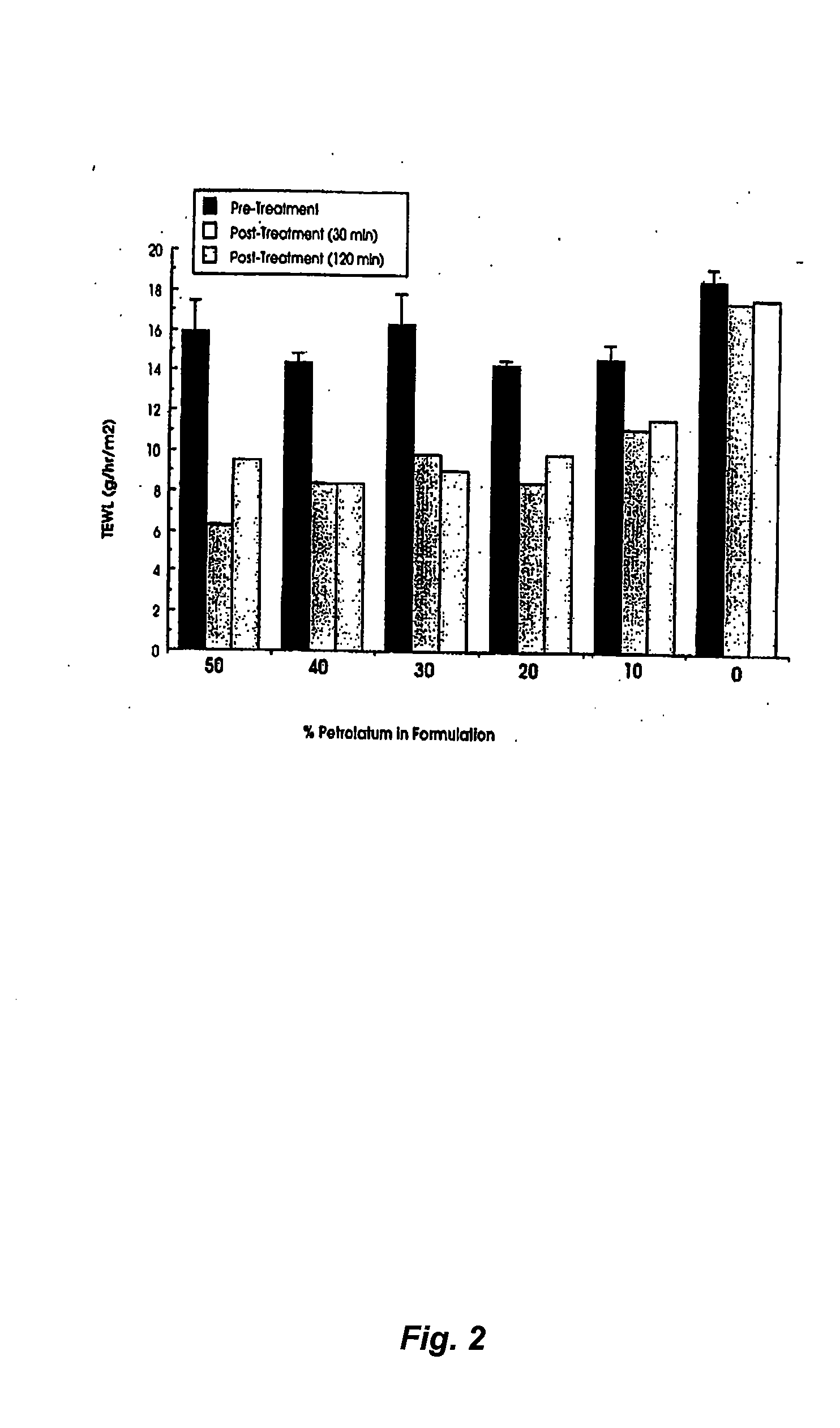Vitamin formulation
a technology of vitamin formulation and active ingredients, applied in the field of vitamin formulation, can solve the problems of not being able to include such large amounts of occlusive agents, greasy, sticky lather on the skin, etc., and achieve the effect of improving the topical delivery of pharmaceutical active ingredients
- Summary
- Abstract
- Description
- Claims
- Application Information
AI Technical Summary
Benefits of technology
Problems solved by technology
Method used
Image
Examples
example 1
Formulations
[0106] A series of 7 pharmaceutical formulations were prepared in accordance with the present invention. The composition of each formulation is given in Table 1.
TABLE 1Ingredient1234567Petrolatum10%10%20%30%30%40%50%Clobetasol Propionate0.05% 0.05% 0.05% 0.05% 0.05% 0.05% 0.05% Caprylic / Capric Triglyceride————10%——Alkyl Benzoate10%10%10%10%—10%10%Cetearyl glucoside2.5% ——————Sorbitan Stearate—1.63% 2.54% 3.44% 3.02% 4.35% 5.25% Polysorbate 60—2.37% 3.46% 4.56% 4.98% 5.65% 6.75% Water72.25% 70.95% 58.95% 46.95% 46.95% 34.95% 22.95% Preservatives0.2% ——————Propellant 5% 5% 5% 5% 5% 5% 5%
example 2
Effect of Petrolatum Concentration on the In-vitro Epidermal Penetration of Clobetasol from Topical Mousse Formulations
[0107] Aim. The aim of the study was to: [0108] I. determine the penetration of the steroid clobetasol into human epidermis following topical application of mousse formulations to which increasing concentrations of petrolatum had been included as a potential occlusive agent and penetration enhancer. [0109] II. To assess clobetasol penetration following application to intact epidermis and that which had been stripped 3 times with tape to model the impaired stratum corneum barrier function seen in the dermatological conditions for which the drug is used clinically.
[0110] Method. Preparation of epidermal membranes: Donated human female abdominal skin was separated by blunt dissection, to remove subcutaneous fat and extraneous tissue, and immersed in water at 60° C. for 2 minutes to allow separation of the epidermal-dermal junction. Epidermal membranes were lifted fro...
example 3a
The Effect of Petrolatum Concentration on the Occlusivity of Topical Mousse Formulations
[0116] Aim. The aim of the study was to determine whether increasing the concentration of petrolatum in topical mousse formulations could effectively occlude the underlying skin and thereby lead to increased local hydration which in turn is known to improve the percutaneous penetration of suitable drugs.
[0117] Method. Relative degrees of occlusion of the skin in humans can be effectively quantified by following changes in the normal rate of transepidermal water loss (TEWL) caused by procedures such as formulation application. In the present study a commercially available single probe TEWL meter (Tewameter, Courage and Khazaka, Cologne, Germany) was used to determine the rate of TEWL (g / hr / m2) at a number of 2×2 cm numbered test squares marked on the medial side of the forearm of a healthy volunteer. Baseline readings of TEWL were taken in triplicate at each test site prior to the application of...
PUM
| Property | Measurement | Unit |
|---|---|---|
| pH | aaaaa | aaaaa |
| weight percent | aaaaa | aaaaa |
| pH | aaaaa | aaaaa |
Abstract
Description
Claims
Application Information
 Login to View More
Login to View More - R&D
- Intellectual Property
- Life Sciences
- Materials
- Tech Scout
- Unparalleled Data Quality
- Higher Quality Content
- 60% Fewer Hallucinations
Browse by: Latest US Patents, China's latest patents, Technical Efficacy Thesaurus, Application Domain, Technology Topic, Popular Technical Reports.
© 2025 PatSnap. All rights reserved.Legal|Privacy policy|Modern Slavery Act Transparency Statement|Sitemap|About US| Contact US: help@patsnap.com



